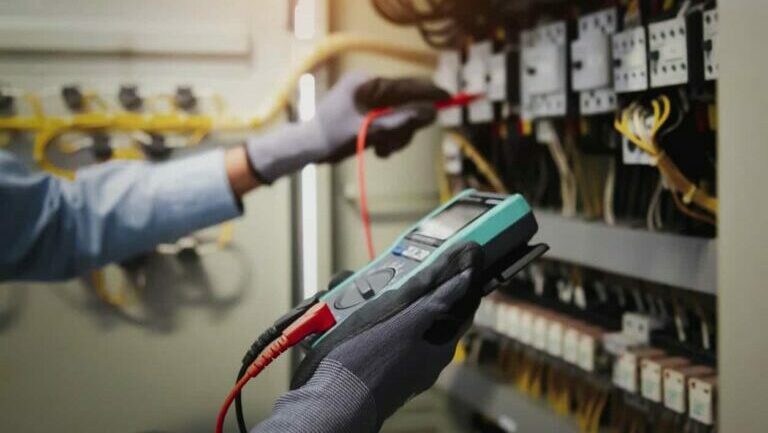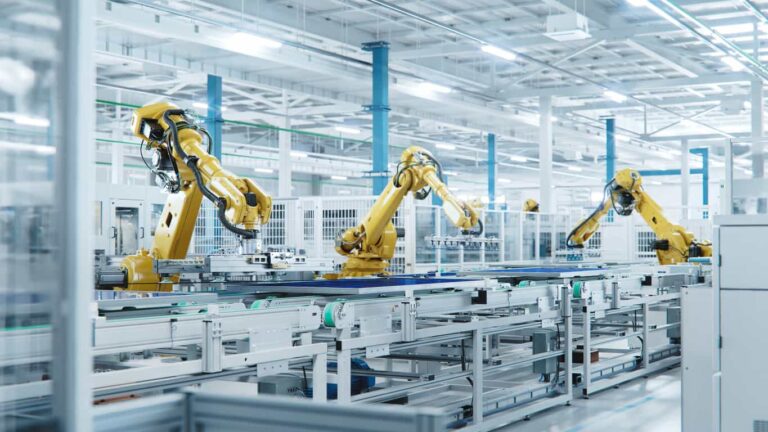Enter your info below and you will receive immediate access to download the resource.
Electrical Troubleshooting Tips

Industrial facilities depend on the performance of their electrical systems for maximum productivity. From the wiring within the building itself to the advanced circuitry that controls each individual piece of machinery, it’s critical that every electrical element function as intended to ensure smooth and efficient operations. Unfortunately, these systems also are prone to breaking down at the worst possible times, creating bottlenecks and confusion as maintenance and repair teams scramble to determine the cause of the issues.
At the core of any response to failure in an electrical system is a strong troubleshooting protocol. This is critical for resolving problems in a systematic way that ensures nothing is overlooked and that all possibilities are considered. Considering how complex and intricate many electrical systems are, such an approach is not only prudent, but necessary. Industrial companies that want to make sure their repair and maintenance teams solve problems to the best of their ability should pay attention to best practices for electrical troubleshooting so they maximize their efficacy.
Surefire Steps for Troubleshooting
There is no shortage of things that can go wrong in an electrical system, and failure may look different for one piece of equipment than it does for another. This means that there’s no surefire solution to faults that applies to every asset. However, the process through which maintenance and repair teams can assess the root cause of issues and ascertain the solution is consistent no matter what type of equipment or component has failed.
The basic framework of any electrical troubleshooting process is as follows:
- Gathering information — The first step to solving a problem is defining what the problem is in the first place. Which element of the system has stopped functioning? What should it be doing, and what is it doing now? Is there a history of issues similar to this with this system? These are some of the most important questions for a technician to ask before getting started on fixing a problem.
- Finding the source of the problem — This process involves a lot of testing and checking of various components, which is why it helps to have as much documentation about the equipment as possible. Understanding how each component should work and the role it plays in the normal functioning of the system makes it much easier to isolate any elements that appear to be out of spec.
- Fixing the defective component(s) — In many cases, an electrical problem can be resolved simply by replacing a component that has become faulty, such as a leaking capacitor or frayed wiring harness. In other cases, there may be a simple fix such as resoldering a cracked connection on a circuit board.
- Testing the repaired element — Once the component believed to be at fault has been replaced or restored, the next step is to make sure the problem has been resolved. This is important because there may be unresolved issues lurking deep within the system that went unnoticed during the first round of troubleshooting. An additional test to verify the repairs can be critical for unearthing these deeper issues.
- Keeping detailed records — A comprehensive maintenance and repair log can be a valuable resource the next time something goes wrong with an electrical system. When technicians have detailed records of previous faults, what caused them and how they were fixed, they can zero in on potential solutions to the current problem that much faster.
Why Maintenance is the Best Form of Troubleshooting
Perhaps the best way to troubleshoot electrical system issues is to prevent them from happening in the first place. This is what makes maintenance a crucial element of any industrial environment. By performing routine checks and following predictive maintenance practices, facilities can spot potential problems before they have a chance to rear their ugly heads and disrupt production.
Having the expertise of seasoned professionals provides companies that depend on advanced electronics systems the peace of mind they need to continue focusing on their work. With expert technicians on the lookout for any lurking concerns, they can be rectified with minimal impact to the rest of the facility.
When You Need Help, Call EOSYS
When you have digital transformation experts working with you from the very beginning of your systems integration, you can have confidence that your systems will be as robust as possible. EOSYS is a leading systems integrator experienced in helping clients across multiple industries achieve their digital transformations as smoothly and effectively as possible. Our expertise in equipment and network architecture ensures that any potential issues within your systems will be kept to an absolute minimum. To learn more about all the capabilities we can provide for you, reach out and let us know what you need.

Discover EOSYS NEXT co-op opportunities tailored to your major. Download brochures for Chemical, Computer, and Electrical Engineering, plus Computer Science.

Move-in ready housing for EOSYS NEXT Engineers—fully furnished, convenient, and available near our offices in TN, AL, GA, and OH.

Is Automation Part of Digital Transformation? Learn more about transforming your business’s processes with EOSYS Group.